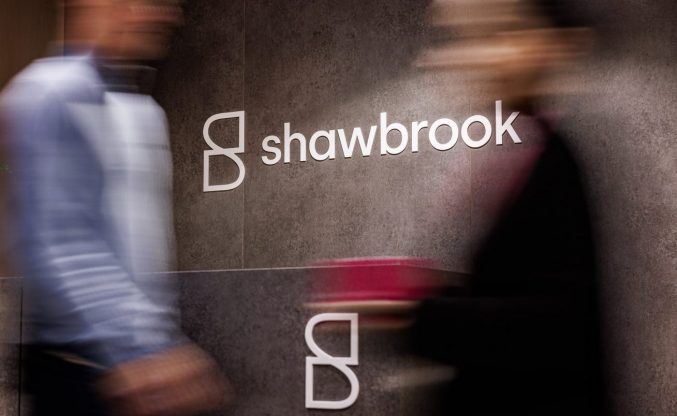Gender pay gap in bridging – ‘There is a chink of light on the horizon’
By Laura Miller

‘Women in the finance industry earn 30% less than men’. That is the headline from research published on 18 July 2022. Thirty per cent. Almost a third. A huge amount.
The CFO Salary Benchmark study found the average salary in the UK finance sector is £105,000. But for a woman in the sector, based on the findings, it is only £73,500.
The UK finance sector is a broad church, of which bridging is only one part of the varied congregation. Figures on the gender pay gap in bridging specifically don’t seem to exist.
Anecdotally the picture is mixed. While some women in the sector haven’t encountered any discrepancy in pay, others, like Alison Houghton-Corfield, national relationship director at broker Master Private Finance, definitely have.
“I have had personal experience of this and know many other women who have experienced it too,” she said, without wanting to name names, “it’s been this way for years”, she added.
Women are often told the problem is their fault, that they lack confidence when it comes to salary negotiation, which keeps their pay lower. But ever louder voices are asking why salaries aren’t simply published on the job advert.
The Show the Salary campaign is one of them. It calls out the practice of putting opaque references to “competitive salary” or similar on job descriptions, and encourages employers to take a simple pledge; to always show the salary for the roles they advertise.
It also strongly encourages those signing the pledge – around 280 companies so far – to never ask candidates for their current or previous salary, another way women can be consistently paid less from one job to the next.
Houghton-Corfield is unequivocal: “Lack of salary disclosure on job vacancies contributes to the gender pay gap.” She went on: “Why would an organisation advertise a role without disclosing the salary? If it’s a “competitive salary” be crystal clear on what it is and publish the salary so all applicants can see it, this would promote equality and stop gender pay discrimination.”
The government seems to agree. In March 2022 the Government launched a similar pay transparency pilot to break down barriers for women, in which participating employers will run trials aimed at closing salary gaps by publishing salaries on all job adverts.
Having very clear salary banding can be useful in ringfencing all individuals at a particular level, said Sabinder Sandhu, Head of Operations & Marketing, Avamore Capital. She added: “If you have people sitting below or above that bracket it quickly becomes apparent that employees are being treated unfairly”.
Thinking about her own experience, salary negotiations can put you outside of your comfort zone regardless of sex, said Sandhu:
“We all come to work to earn, but ironically, pay is generally a taboo subject”. In her career at Avamore, progression has always been openly discussed with the directors and with that comes conversations around earning expectations.
Sandhu said: “The important thing I have learnt is to be honest when the opportunity comes up because when you get to your salary and bonus review, it’s almost too late to have that discussion”.
Often the gender pay gap is indicative of a problem not of pay discrimation but of a lack of women in senior roles that demand higher pay.
Some organisations have looked to counter this with policies including multiple women on shortlists both for entry level and board level positions help redress the balance.
In 2021 banking giant Deutsche Bank set an implicit quota of 50% women for senior hires. Meeting this strict 2025 target is ‘a business necessity’, the lender’s human resources head said.
Houghton-Corfield said: “You can have whatever policies and shortlists you like but if the executive committee aren’t open to having an inclusive business, I can’t see how it can drive the positive change required, as it is deep rooted in affinity bias and groupthink.”
This, she added, is bad for business, because groupthink “isn’t innovative”. She said: “I don’t want people who are the same as me, heaven forbid, it would drive me mad.
I want people who have different strengths, views, backgrounds and ideas to me, this fosters innovation and can future proof a business.”
Structured interviews (with set tasks to complete for example) for recruitment and promotions are used in some organisations, like the British Civil Service, to help remove the ‘men hiring men’ or ‘men promoting men’ bias.
Houghton-Corfield said “there’s lots of work to be done here and we are nowhere near where we need to be on this yet”.
The momentous task, she said, is to undo “hundreds of years of inherent beliefs and biases around women’s abilities in the workplace”. But the pressure is on from many sides to get it right this time.
Houghton-Corfield said: “There are big expectations on leaders nowadays and this isn’t only coming from the shareholders, it’s coming from the employees and customers alike, they expect leaders to put more value on emotional intelligence and not just put profits, so this could be the driver of equality, if organisations care to listen and take note.”
Avamore has implemented diversity and inclusion policies to help its recruitment process. Sandhu said her view is that while quotas are useful for benchmarking they can “often blindside” the search for the right candidate.
She added: “For me, it’s about being creative in your avenues for employment before you even start looking for an individual to join the firm.”
Avamore is diversifying the recruiters it is going to, looking at hiring from laterally relevant industries and targeting students at graduate fairs for its next intake of individuals.
Sandhu continued: “By fishing from different pools, diversity will develop organically and for me personally, that is preferable to feeling obligated to add female candidates on shortlists; with approaches like that, it becomes about optics rather than genuinely working to address the imbalance we face.”
You would struggle to find a large company without a diversity, equality and inclusion manager somewhere within the organisation these days. Is this the solution to the gender pay gap?
Sandhu isn’t so sure. “From my perspective, senior members within a team have a shared responsibility to be diversity managers,” she said. If the role is assigned to an individual, there is a danger there will be a lack of ownership across the business around the issue, she added, “when the very point is to encourage inclusivity”.
Houghton-Corfield said she would support the appointment of diversity managers, “only if they are unequivocally supported from the top and have lived experience and the organisations are prepared to listen to some harsh truths and act upon them”.
Equality and diversity “must be a genuine priority for an organisation, and not just virtue washing” she added: “It’s glaringly obvious and extremely insulting when organisations just want to tick a box but lack any authenticity.” Long term this will have far reaching consequences for the brand, she said.
After various promises and initiatives to address it, the figures showing there’s still a 30% difference in financial services pay between men and women make grim reading. But Houghton-Corfield is hopeful.
She said: “We need more women at the table, which is happening, but along with this, we need more men to be open minded about the great qualities women have to offer and to truly listen to women when they speak.”
Having worked with thousands of men over the years, she has come across a minority of “amazing leaders, mentors and friends”. But, she added: “More men are seeing the value that women can add to organisations – there is a chink of light on the horizon now.”

Laura Miller is a freelance journalist who writes about money and business. She regularly appears in UK national and trade newspapers and magazines, and has previously worked for ITV News and the Telegraph among others. Find her on twitter @thatlaurawrites










You must be logged in to post a comment.